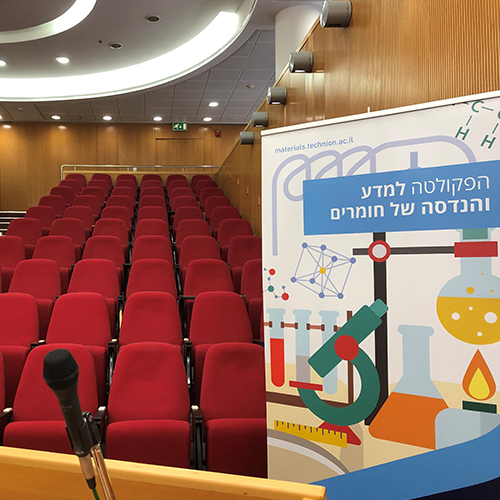
Mrs. Noor Abo-Ahmad - M.Sc. candidate
12/05/2024
David Wang Auditorium, 3rd floor Dalia Meidan Bldg.
14:30
III-N materials have a Wurtzite crystal structure, which naturally exhibits piezoelectricity due to its non-centrosymmetric nature. This property holds significant implications in GaN applications, such as in high electron mobility transistor (HEMT) technology, where polarization is responsible for generating the conductive 2D electron gas layer. Recent studies have revealed that nanoscale porosity enhances the piezoelectric response of GaN. For example, research indicates that approximately 40% porous GaN exhibits a 2–3 times higher piezoelectric coefficient compared to bulk GaN, increasing from 3 pC/N to about 8 pC/N and studied the effect of one type and degree of porosity on the piezoelectric coefficients.
In this study, we further investigate the impact of porosity on GaN with different doping levels, analyzing electrical properties using atomic force microscopy (AFM). Porosification was accomplished using electrochemichal etching. This process took place within a two-electrode cell at room temperature, with doped GaN serving as the anode, and a platinum foil as the counter electrode, with a 0.25M oxalic acid solution as the electrolyte. Characterization was done using PFM (Piezoresponse Force Microscopy) to investigate the piezoelectric properties and PF-TUNA (PeakForce Tunneling AFM) to assess the conductivity properties of the porous GaN material. The results show an increase of piezo-potential with porosity with approximately 54% porous highly doped GaN exhibiting an 11 pC/N piezoelectric coefficient. Furthermore, by employing PF-TUNA, we evaluate variation.


